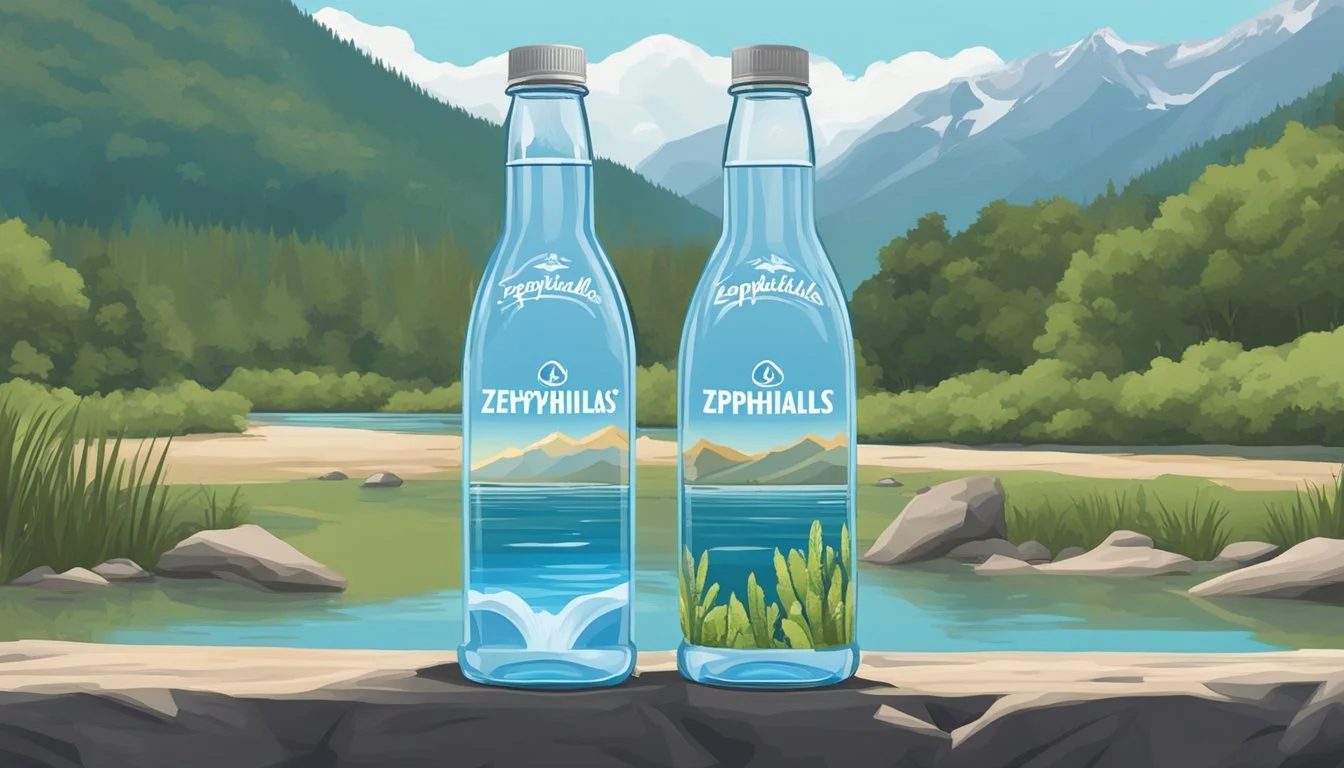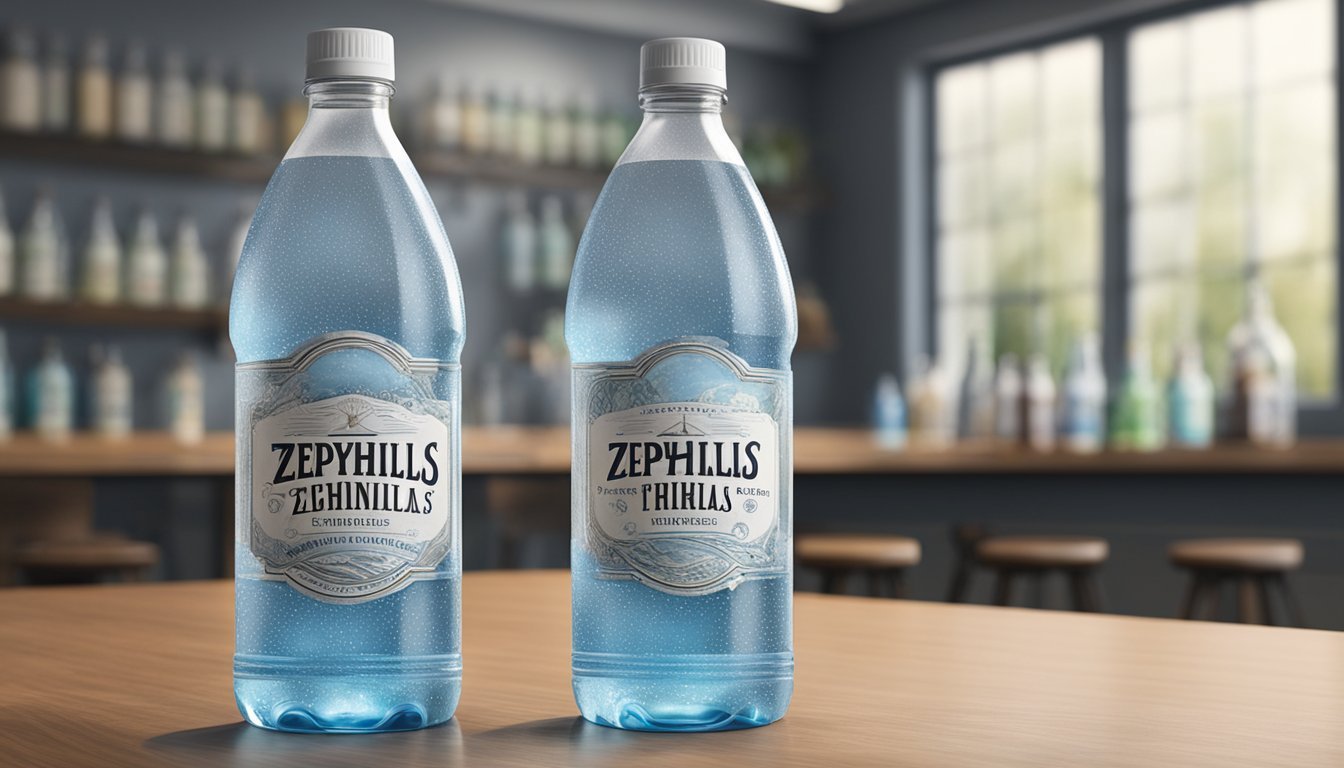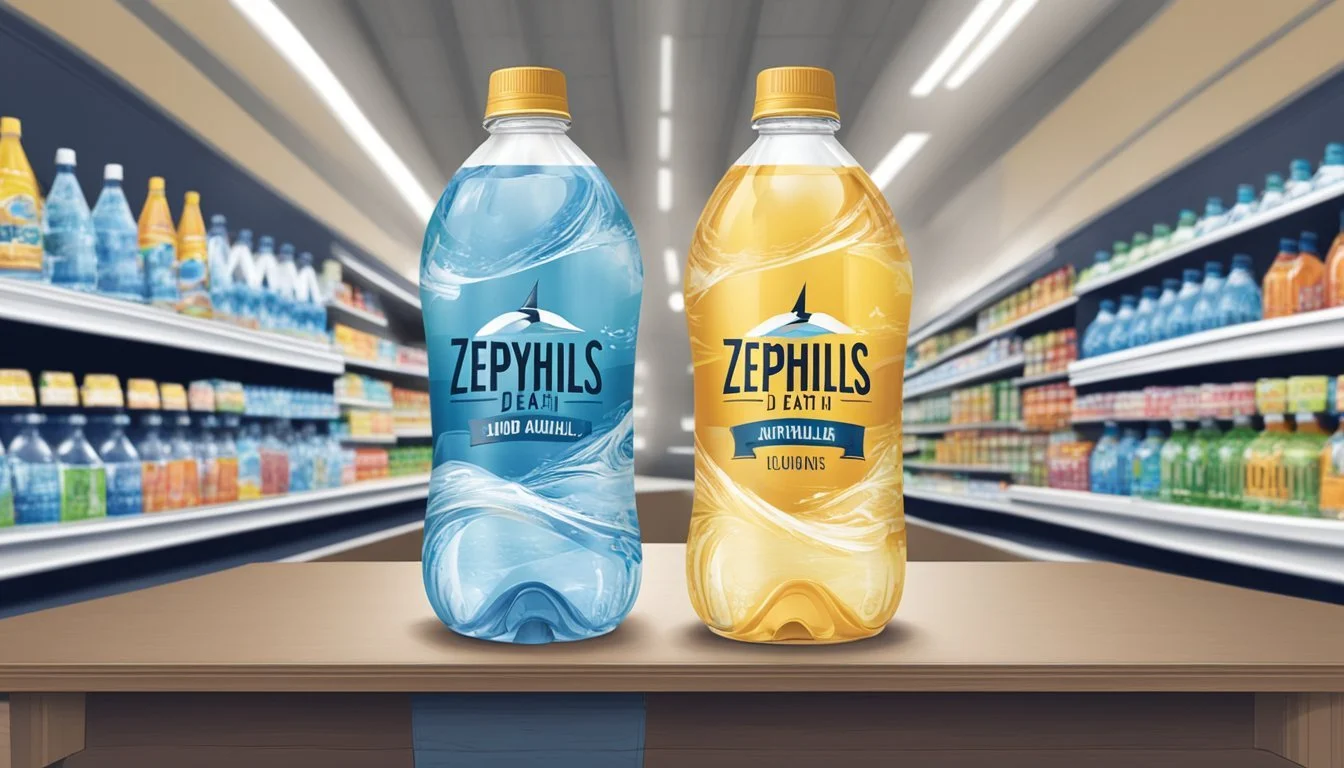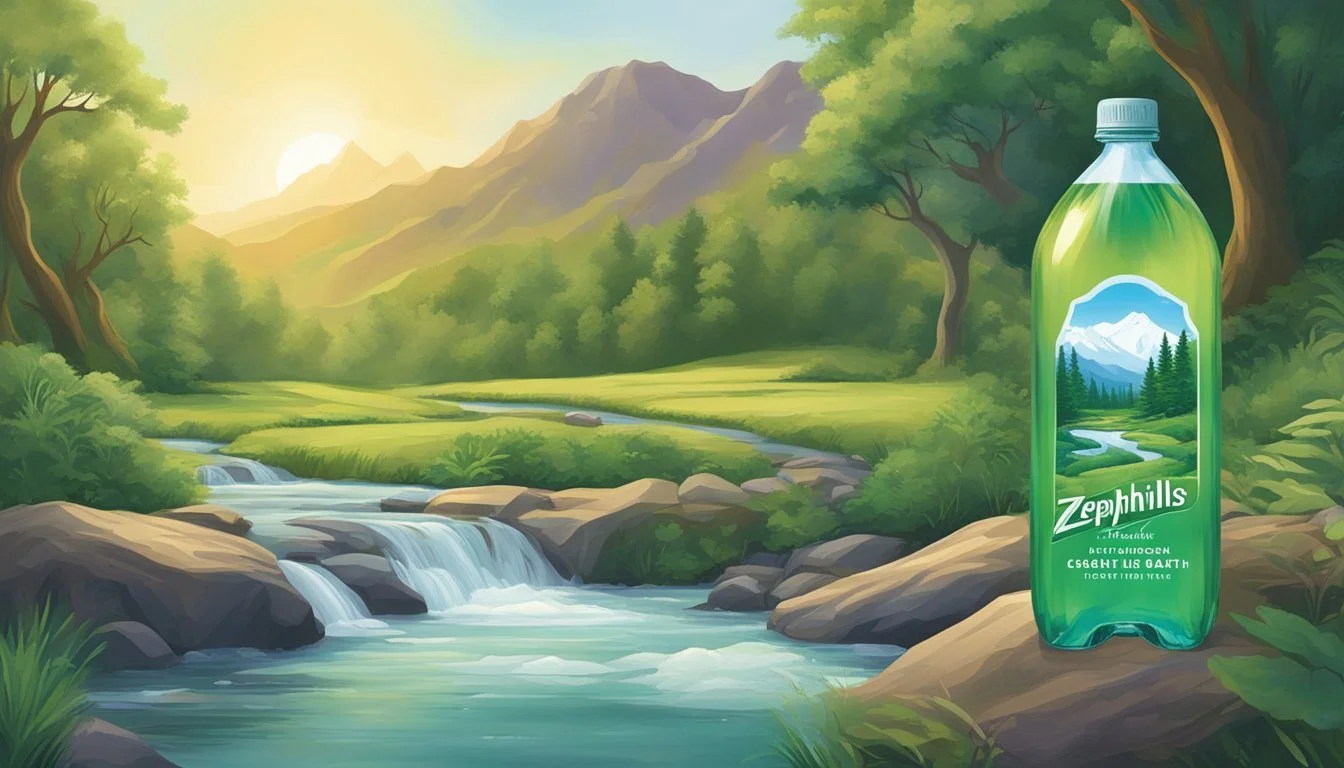Zephyrhills vs. Liquid Death
A Comparative Analysis of Bottled Water Quality
Comparing bottled water brands can feel like a daunting task, as differences in taste, quality, and branding play a pivotal role in our choices. Zephyrhills, known for its natural spring water from Florida, offers a refreshing and clean taste, enhanced by the naturally occurring minerals it contains. On the other hand, Liquid Death, despite its intimidating name, presents a unique and edgy brand image that appeals to a modern, youthful audience. Their water, sourced from the Austrian Alps, is marketed with an emphasis on both quality and environmental consciousness, as their packaging encourages recycling.
When it comes to the taste, Zephyrhills provides a mild and neutral flavor, making it a great everyday water choice for many families. Liquid Death, while equally refreshing, positions itself as more than just a hydration option, aiming to 'murder' your thirst with both still and sparkling options. This aligns with a growing interest in mineral and sparkling water options that not only hydrate but also offer a more dynamic drinking experience.
For those focused on quality and mineral content, both brands deliver commendable hydration options. Zephyrhills boasts a reliably crisp taste praised by many for its purity and natural source, while Liquid Death's compelling brand message and environmentally focused packaging make it a more memorable choice. Each brand brings something unique to the table, ensuring there is a perfect fit for different preferences and lifestyles.
The Essence of Bottled Water
Choosing the right bottled water involves several factors. Assessing the pH balance, mineral content, type of water, and environmental footprint can guide an informed decision.
Understanding pH Balance and Mineral Content
The pH level of water is crucial for taste and health. Zephyrhills natural spring water typically has a balanced pH ranging from 6.5 to 8.5, making it neutral to slightly alkaline. It comes with naturally occurring minerals that enhance its flavor.
Liquid Death, sourced from the Austrian Alps, also offers a balanced pH and contains vital minerals. The pure mountain spring water provides electrolytes like calcium and magnesium, which are essential for hydration and overall wellness.
A comparison table might help:
Brand pH Range Key Minerals Zephyrhills 6.5 - 8.5 Calcium, Magnesium, Potassium Liquid Death 6.5 - 8.0 Calcium, Magnesium, Sodium
Spring Water vs. Purified Water
Spring Water: Zephyrhills is a prime example of natural spring water. Sourced from fresh, clean springs, it retains its original mineral content, offering a crisp taste.
Purified Water: In contrast, purified water, such as that offered by Liquid Death, undergoes extensive filtration to remove impurities. This process often strips the water of natural minerals, but some brands add minerals back for taste.
The choice between spring and purified water often hinges on personal preference for natural mineral content and taste purity.
Environmental Impact of Water Brands
Environmental considerations are vital in choosing bottled water. Zephyrhills is sold in plastic bottles, which contribute to plastic waste if not recycled properly. Consumers should ensure these bottles enter the recycling stream to minimize environmental harm.
Liquid Death opts for aluminum cans, which are more recyclable than plastic. These cans employ 70% recycled material, reducing the carbon footprint. The brand's commitment to sustainability and reducing plastic waste is noteworthy.
Key Points:
Zephyrhills: Natural spring water, recyclable plastic bottles.
Liquid Death: Mountain spring water, recyclable aluminum cans.
Focusing on the environmental practices of these brands can help consumers make eco-friendly choices.
Profile of Competing Brands
This section provides an in-depth look at the two competing bottled water brands, focusing on their origins, primary sources, and unique selling points.
Zephyrhills: Florida's Natural Springs
Zephyrhills is a notable brand that sources its water from Florida’s natural springs. These springs are part of an extensive network of aquifers that deliver fresh, clean water. The brand has a strong reputation for maintaining high purity and offering a taste that many describe as crisp and refreshing.
The water is bottled at the source, emphasizing minimal processing to retain its natural mineral content. Consumers appreciate Zephyrhills not just for its quality, but also for its dedication to sustainable practices. The company implements measures to ensure the springs and surrounding ecosystems are protected, contributing to its overall appeal.
Liquid Death: Quenching Thirst with an Attitude
Liquid Death, sourced from the Austrian Alps, provides 100% mountain spring water. Known for its bold marketing and distinctive aluminum can packaging, Liquid Death stands out in the bottled water market. The brand leverages its unique packaging to promote sustainability, as aluminum cans are more recyclable than plastic.
The water itself is noted for its mountain-fresh taste, free from contaminants often found in tap water. This purity, combined with a clear marketing edge, makes Liquid Death a choice for those seeking both quality and a brand with personality. Its efforts in sustainability, with cans containing a high percentage of recycled material, further enhance its market position.
Water Quality and Safety
When evaluating the quality and safety of bottled water, factors such as filtration processes, mineral content, and adherence to health regulations are paramount. Zephyrhills and Liquid Death both aim to provide safe drinking water, but their methods and results can differ significantly.
Filtration and Purification Processes
Zephyrhills sources its water from natural springs and uses a multi-step purification process. This includes filtration to remove large particles, UV treatment to eliminate microorganisms, and ozonation to ensure long-term safety. The comprehensive approach helps in maintaining the balance of essential minerals while ensuring the absence of harmful contaminants.
Liquid Death focuses on purity through an elaborate filtration process. Their water is sourced from pristine mountain springs and undergoes a series of meticulous treatments, including both carbon and micron filtration. The use of aluminum cans instead of plastic bottles also helps in reducing the chances of contamination from BPA, a common concern with plastic packaging. Both brands strive to offer water that meets stringent safety standards.
Health and Mineral Benefits
Zephyrhills water contains naturally occurring minerals such as calcium, magnesium, and potassium, contributing to its beneficial qualities. These minerals are essential for various bodily functions, including bone health and muscle function. The pH balance of Zephyrhills water usually falls between 6.5 and 8.5, which is within the ideal range for drinking water, promoting a neutral to slightly alkaline environment.
Liquid Death, while marketed as a "healthier" option due to its packaging, offers fewer added minerals in its product. Their sparkling water variant does not contain additives, keeping the composition as close to natural as possible. This can appeal to those who prefer water with minimal intervention, yet it lacks some of the beneficial electrolytes found in other mineral water brands.
Regulations and Standards Compliance
Both Zephyrhills and Liquid Death comply with the regulations set forth by the Food and Drug Administration (FDA). This ensures that their bottled water meets national safety and quality standards. Zephyrhills' rigorous testing not only aligns with FDA guidelines but also adheres to state-specific norms, offering an additional layer of assurance.
Liquid Death follows a similar path, ensuring that their water is free from contaminants like lead and other harmful substances. Their commitment to quality is evident in their regular testing and adherence to safety protocols. By maintaining compliance with both federal and state regulations, both brands reinforce their dedication to providing safe drinking water.
Consumer Experience
When comparing Zephyrhills and Liquid Death, key aspects such as taste profile, packaging, and brand perception play critical roles in shaping the consumer experience. Each brand offers unique attributes that cater to differing preferences and values.
Taste Profile and Variety
Zephyrhills is renowned for its natural spring water taste, enriched with naturally occurring minerals. This gives it a clean, crisp flavor that many consumers find refreshing. Their product line includes both still and sparkling water, though their focus remains on the natural spring water.
Liquid Death, on the other hand, offers a unique take on hydration with unflavored still and sparkling water options. Their sparkling water is noted for its strong carbonation, providing a fizzy experience not commonly found in other brands. Both brands’ taste profiles appeal to specific consumer preferences—Zephyrhills for a natural taste and Liquid Death for a bold, fizzy alternative.
Packaging and Convenience
Packaging plays an essential role in consumer convenience. Zephyrhills uses traditional plastic bottles, which can be found easily in grocery stores and through online retailers like Amazon. The familiarity and accessibility of plastic bottles contribute to their widespread use, though concerns about environmental impact persist.
Liquid Death distinguishes itself by using aluminum cans, which are recyclable and considered more eco-friendly. This packaging choice caters to environmentally conscious consumers. Furthermore, Liquid Death's edgy can design appeals to those seeking an alternative to conventional bottled water. The convenience of carrying and disposing of these cans adds another layer of appeal.
Brand Perception and Customer Loyalty
The perception of each brand deeply influences customer loyalty. Zephyrhills benefits from its reputation as a trusted, longstanding provider of natural spring water. The brand's association with purity and tradition strengthens its market position, particularly among health-conscious consumers who value natural mineral content.
Liquid Death markets itself with an unconventional, rebellious image aimed at a younger, more adventurous demographic. The brand’s distinctive marketing and packaging have garnered a loyal following who appreciate its commitment to environmental sustainability and its bold persona. This strong brand identity aids in differentiating Liquid Death in a crowded market, making it a favorite among those who value both style and substance.
Market Analysis: Brand Positioning and Range
Zephyrhills and Liquid Death cater to different market segments while both positioning themselves within the premium bottled water sector.
Comparison with Other Premium Water Brands
Liquid Death, with its aggressive branding and unique packaging, positions itself as an edgy and unconventional choice in the premium water market. It stands out starkly against brands like Fiji Water, Voss, and Evian, which emphasize purity and natural sources.
Zephyrhills, with its focus on being natural spring water, appeals to consumers looking for a no-frills but high-quality product. While Zephyrhills aligns closely with Evian and Acqua Panna in terms of natural water source branding, Liquid Death seeks to attract a younger, more rebellious audience through its distinctive marketing.
Availability and Market Penetration
Zephyrhills enjoys widespread availability across the U.S., being a staple in supermarkets and convenience stores. It's often found on the shelves of chains like Whole Foods, making it accessible to a broad audience.
Liquid Death, on the other hand, leverages its unique branding to penetrate niche markets and online platforms. It has seen significant growth in visibility and consumer interest, particularly among younger demographics.
Retail partnerships and a strong online presence have been crucial in expanding Liquid Death’s reach, whereas Zephyrhills benefits from established distribution channels.
Pricing and Value Proposition
Zephyrhills provides value through its affordability while maintaining a reputation for quality. Its pricing strategy makes it a competitive option among premium natural spring waters.
Liquid Death commands a higher price point, with a 12-pack often priced at $16.99. This premium reflects its investment in distinctive packaging and marketing. The brand’s value proposition hinges on its unique identity and environmental messaging, aiming to appeal to eco-conscious consumers willing to pay a premium for style and sustainability.
In comparison, Zephyrhills’ competitive pricing makes it a go-to for consumers seeking high-quality water without the added cost. This price differentiation highlights the varied approaches both brands take to attract and retain their respective customer bases.
Environmental and Health Implications
Zephyrhills and Liquid Death differ significantly in terms of health effects and their approach toward sustainability. This section analyzes the impact of both brands on well-being and ecological practices.
The Effects of Bottled Water on Health and Wellness
Zephyrhills offers natural spring water, typically rich in minerals like calcium and bicarbonate, which can support hydration and overall health and wellness. The water is sourced and bottled within Florida, known for quality checks aligning with regulatory standards. Health-wise, it provides essential minerals beneficial for the body's daily functions.
Liquid Death, on the other hand, markets itself as mountain water with a focus on purity. It’s sold in aluminum cans, reducing plastic waste. While priced at a premium, Liquid Death contains no added potassium or calcium unless naturally occurring, making it comparable to Zephyrhills regarding hydration benefits without additional mineral content.
Both brands comply with FDA regulations, ensuring safe consumption. Nonetheless, Liquid Death's lack of additives makes it a unique choice for those concerned about artificial ingredients often found in flavored versions.
Sustainable Practices in Bottled Water Industry
Zephyrhills practices careful harvesting of its spring water, focusing on minimal environmental impact. The brand employs eco-friendly measures encompassing sustainable sourcing and packaging innovations. They strive to reduce their carbon footprint through scaling back non-recyclable materials and promoting community water education initiatives.
Liquid Death is celebrated for its eco-conscious packaging. The use of recyclable aluminum cans sets a trend away from single-use plastics, directly addressing the issue of nanoplastics. The brand’s commitment to reducing plastic pollution is a key differentiator.
Their marketing campaigns also advocate for environmental causes, ensuring that their measures form part of the larger conversation on sustainability. This resonates with consumers looking for eco-friendly alternatives without compromising their hydration needs.
Looking Towards the Future
Both Zephyrhills and Liquid Death are moving towards innovative methods in water sourcing and production, while the consumption trends of bottled water continue to evolve. The future holds advancements that could significantly impact the industry.
Innovations in Water Sourcing and Production
Zephyrhills, known for its natural spring water, is exploring more sustainable ways to source and purify its water. This includes advanced natural filtration through layers of rock and sand. They utilize reverse osmosis to ensure purity, which is combined with ozone disinfection and UV treatment to maintain quality.
Liquid Death, on the other hand, focuses on eco-friendly packaging and production. Their use of aluminum cans instead of plastic bottles reduces environmental impact. Both companies are likely to invest in technology to decrease carbon footprints and enhance sustainability in their operations.
Emerging Trends in Bottled Water Consumption
Consumer preference is shifting towards water with added minerals and alkaline water for perceived health benefits. Brands like Essentia and Core Hydration highlight the importance of balanced pH levels and electrolytes.
With increasing awareness about environmental issues, there is a rising demand for packaging alternatives. Products like Liquid Death align well with this trend by offering more sustainable options. The industry may also see a growth in customized water solutions, where consumers can choose flavors, mineral content, and packaging to suit their preferences.
As consumers become more conscious of health and environmental impact, the bottled water industry will need to adapt to these growing demands innovatively and responsibly.
More About Zephyrhills
Core Hydration vs Zephyrhills: Which Bottled Water is Better?
Icelandic Glacial vs Zephyrhills: Which Bottled Water is Better?
Mountain Valley Spring Water vs Zephyrhills: Which Bottled Water is Better?
Nestle Pure Life vs Zephyrhills: Which Bottled Water is Better?
Poland Spring vs Zephyrhills: Which Bottled Water is Better?
San Pellegrino vs Zephyrhills: Which Bottled Water is Better?
Zephyrhills vs Aqua Carpatica: Which Bottled Water is Better?
Zephyrhills vs Cascade Mountain: Which Bottled Water is Better?
Zephyrhills vs Crystal Geyser: Which Bottled Water is Better?
Zephyrhills vs Hawaii Volcanic: Which Bottled Water is Better?
Zephyrhills vs Hawaiian Springs: Which Bottled Water is Better?
Zephyrhills vs Kirkland Signature: Which Bottled Water is Better?
Zephyrhills vs Purely Sedona: Which Bottled Water is Better?
Zephyrhills vs Richard's Rainwater: Which Bottled Water is Better?
Zephyrhills vs Solan de Cabras: Which Bottled Water is Better?
Zephyrhills vs Talking Rain AQA: Which Bottled Water is Better?
Zephyrhills vs Whole Foods 365: Which Bottled Water is Better?
Zephyrhills vs Whole Foods Italian Still Mineral water: Which Bottled Water is Better?
More About Liquid Death
Aqua Carpatica vs Liquid Death: Which Bottled Water is Better?
Core Hydration vs Liquid Death: Which Bottled Water is Better?
Hawaii Volcanic vs Liquid Death: Which Bottled Water is Better?
Hawaiian Springs vs Liquid Death: Which Bottled Water is Better?
Ice Mountain vs Liquid Death: Which Bottled Water is Better?
Icelandic Glacial vs Liquid Death: Which Bottled Water is Better?
Liquid Death vs Cascade Mountain: Which Bottled Water is Better?
Liquid Death vs Crystal Geyser: Which Bottled Water is Better?
Liquid Death vs Crystal Lake: Which Bottled Water is Better?
Liquid Death vs Essence pH10: Which Bottled Water is Better?
Liquid Death vs Kirkland Signature: Which Bottled Water is Better?
Liquid Death vs Proud Source: Which Bottled Water is Better?
Liquid Death vs Richard's Rainwater: Which Bottled Water is Better?
Liquid Death vs Simple Truth: Which Bottled Water is Better?
Liquid Death vs Talking Rain AQA: Which Bottled Water is Better?
Liquid Death vs Whole Foods 365: Which Bottled Water is Better?
Liquid Death vs Whole Foods Italian Still Mineral water: Which Bottled Water is Better?
Mountain Valley Spring Water vs Liquid Death: Which Bottled Water is Better?
Nestle Pure Life vs Liquid Death: Which Bottled Water is Better?
Poland Spring vs Liquid Death: Which Bottled Water is Better?
Purely Sedona vs Liquid Death: Which Bottled Water is Better?
San Pellegrino vs Liquid Death: Which Bottled Water is Better?
Solan de Cabras vs Liquid Death: Which Bottled Water is Better?







